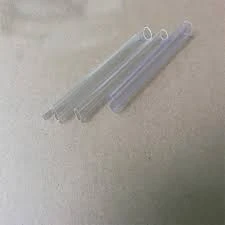Dec . 15, 2024 03:21 Back to list
Understanding the Benefits and Uses of HDPE Duct Pipe in Construction Projects
Understanding HDPE Duct Pipe A Comprehensive Overview
High-Density Polyethylene (HDPE) duct pipes have emerged as a reliable and versatile solution in various industries, particularly for the telecommunication and power sectors. The unique properties of HDPE, combined with modern manufacturing techniques, make it an ideal choice for duct applications. In this article, we will explore the characteristics, advantages, and applications of HDPE duct pipes.
Characteristics of HDPE Duct Pipe
HDPE is a thermoplastic polymer characterized by its high strength-to-density ratio. Duct pipes made from HDPE possess several key features that set them apart from traditional materials like PVC and metal
1. Chemical Resistance HDPE duct pipes are highly resistant to a wide range of chemicals, making them suitable for various environments. This resistance ensures that the pipes maintain their integrity even when exposed to hazardous substances.
2. Flexibility One of the most significant advantages of HDPE is its flexibility. Unlike rigid materials, HDPE duct pipes can bend without breaking, making them easier to install in tight spaces or uneven terrains.
3. Durability HDPE has a long lifespan and can withstand harsh weather conditions, UV radiation, and physical impacts. This durability reduces the need for frequent replacements, making it a cost-effective option over time.
4. Lightweight Compared to traditional materials, HDPE duct pipes are considerably lighter, which simplifies transportation and installation processes. Reduced weight also means lower labor costs and easier handling on site.
5. Smooth Interior Surface The smooth surface of HDPE duct pipes minimizes friction loss, which enhances the flow of air or data. This characteristic is particularly beneficial in telecommunication applications, where maintaining signal integrity is crucial.
Advantages of HDPE Duct Pipe
The benefits of utilizing HDPE duct pipes extend beyond their physical properties
. Here are some notable advantages1. Environmental Impact HDPE is recyclable, aligning with modern sustainability practices. When the ducts reach the end of their service life, they can be processed and reused, thus minimizing environmental waste.
hdpe duct pipe

2. Cost-Effectiveness Although the initial investment for HDPE duct pipes may be higher than some alternatives, their longevity, reduced maintenance needs, and installation efficiency translate to significant savings over the lifecycle of a project.
3. Installation Efficiency The lightweight and flexible nature of HDPE duct pipes simplifies the installation process. They can be easily maneuvered and fitted, reducing labor time and costs. Additionally, the flexibility allows for easier adaptation to existing infrastructure.
4. Reduced Chances of Corrosion Because HDPE does not corrode like metallic pipes, there’s less risk of leaks and failures, which can lead to costly repairs and service interruptions.
Applications of HDPE Duct Pipe
HDPE duct pipes are widely used in multiple sectors due to their favorable properties. Common applications include
1. Telecommunications HDPE ducts are extensively used for laying fiber optic cables, providing the necessary protection and support while ensuring minimal signal loss.
2. Electrical Cables Power distribution companies often use HDPE duct pipes to house underground electrical cables, safeguarding them from potential damage and environmental threats.
3. Wastewater Management In some regions, HDPE pipes are employed in sewer and drainage systems, benefitting from their resistance to corrosive environments.
4. Cable Protection Many industries utilize HDPE ducts for general cable protection, ensuring that electrical, communication, and other cables are safe from physical damage and environmental hazards.
Conclusion
In summary, HDPE duct pipes offer a flexible, durable, and environmentally friendly solution for various applications. Their resistance to chemicals and corrosion, combined with cost-effectiveness and ease of installation, make them an increasingly popular choice across industries. As technology continues to advance, the use of HDPE duct pipes is likely to expand, paving the way for innovative and sustainable infrastructure solutions.
-
High-Quality PPR Pipes and Fittings Durable ERA PPR & PVC PPR Solutions
NewsJul.08,2025
-
Black HDPE Cutting Board - Durable, Non-Porous & Food Safe HDPE Plastic Cutting Board
NewsJul.08,2025
-
High-Quality CPVC Panel Durable HDPE & PVC Panels Supplier
NewsJul.08,2025
-
Double PE Welding Rod Supplier - High Strength, Durable & Versatile Welding Solutions
NewsJul.07,2025
-
High-Quality PVC-O Pipe Supplier Durable 75mm PVC Pipe & Connections Leading PVC Pipe Company
NewsJul.07,2025
-
HDPE Drainage Pipe Supplier – Durable & Corrosion-Resistant Solutions
NewsJul.06,2025

